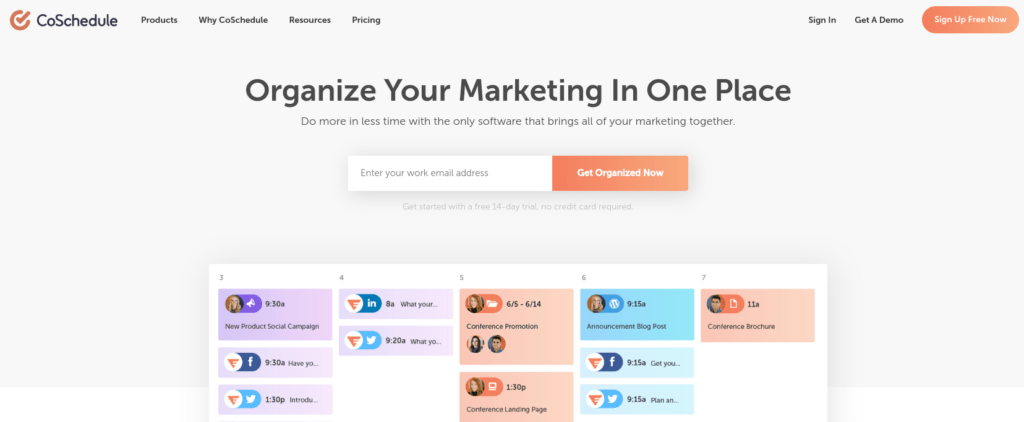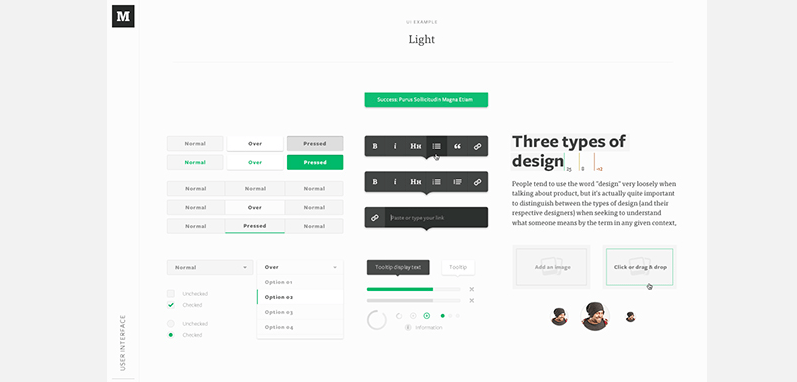A Complete Branding Checklist for New Websites

Contents
Whether it’s for a business you recently started or an existing one that needed a makeover, creating a new website is exciting. However, there are a lot of branding elements to include before launching your site if you don't want people to perceive your brand as sloppy or unprofessional.
Fortunately, you can prevent that from happening by following a few simple steps. If you focus on the most important tasks upfront, you'll increase the likelihood that the launch of your site will be a successful one.
In this post, we’ll discuss the importance of developing a branding strategy for your new website. Then we’ll walk you through five key tasks to include on your branding checklist. Let’s jump right in!
The Importance of Branding Before Launching a New Website
When you're launching a new website, the importance of branding cannot be overstated. Your business' brand is the foundation of your company. It's the identity that influences how consumers perceive your business and the expectations they set.
Quality branding plays a pivotal role in any company's marketing success. But it's particularly critical for new organizations that have yet to establish a reputation. Your website is what most consumers will use to form a first impression of your brand. So you want it to be a positive one.
Creating a strong brand identity can lead to a better website. Once you understand your values, goals, and mission, it becomes easier to design and maintain a website that accurately communicates your message to visitors.
A Complete Branding Checklist for New Websites (5 Key Tasks)
If you want your brand identity to effectively translate to new audiences, there are certain elements to address before launching your website. Let's take a look at five key tasks for properly branding your new site.
1. Write Your Company's Mission Statement and Brand Story
A mission statement addresses the what, why, and how of your business:
- What do you do?
- Why do you do it?
- How do you do it differently than other companies?
A clear, core mission statement communicates your purpose. It gives your company a focus, and helps to keep you on track.
In addition to keeping employees on the same page, you can use your mission statement to stand out from competitors. Strategically placing it on your website where users can view it may make it easier for them to establish a connection with your company:

When writing your mission statement, you might consider including a brand story. This can add a personal touch and humanize your brand so it resonates better with consumers.
For example, you could offer a peek behind the scenes by explaining how your business got started. You could also include a timeline of important events and highlights throughout the journey.
2. Strategize Website and Blog Content
Your content is of paramount importance when it comes to attracting and engaging audiences. It also influences search engine optimization (SEO), which is particularly crucial for new websites.
Before launching your website, it's helpful to establish the keywords you want to target and make sure they are appropriately incorporated throughout the site's copy, headings, descriptions, etc. It's also recommended that you comb through the pages to make sure they're written in a way that speaks to your target audience.
Some questions to consider include:
- Does the website articulate your brand message in a clear and concise way?
- Is the branding consistent on each page, including the language, style, and structure?
- Is the content valuable and helpful, rather than strictly self-serving?
In addition to the content that will be on the site when it launches, you may also want to consider planning ahead by using a content calendar tool such as CoSchedule:

This website is easy to use and offers a two-week free trial. You can use it to create a content calendar and a posting schedule. Strategizing content in advance can help you maintain consistent delivery, which can reinforce customer trust and loyalty.
3. Integrate and Align Your Website With Social Channels
Your social brand is also an extension of your company. Therefore, it's important to make sure it's consistent with your other platforms.
Cohesive branding helps to establish professionalism and credibility. It can also make it easier for users to recognize you across networks. There are multiple ways you can achieve this level of consistency, including:
- Using the same avatar for each network (such as your logo)
- Sticking to your brand voice when writing captions and posts
- Incorporating the same colors in posts and profiles
Let's take a look at Planet Fitness as an example of consistent branding. On its website, there's a prominently displayed offer, a strong use of purple and yellow, and a graphic of a woman working out:

If we go to the company's Facebook page, we see this:

Although the two platforms have a slightly different layout, both incorporate the same elements. This is just one example of how strong branding can help keep your channels aligned.
4. Create Branded Links With Pretty Links
One element of branding that some businesses tend to overlook is linking. However, using branded links is an easy way to distribute links that are optimized and formatted similarly, regardless of where they're shared or where they lead.
Branded links incorporate your business' name into the URL. They're cleaner looking and more memorable than long, bulky links. Plus, they're easy to create, thanks to tools like our Pretty Links plugin:

Once you download and install our plugin, you can use it to shorten and brand your links directly from your WordPress dashboard. You'll then have peace of mind knowing that every time you share a link, it's helping to boost your brand awareness.
5. Develop a Brand Style Guide
Launching a new website can be chaotic, especially with so many branding concerns to consider. This is why it can be helpful to develop a brand style guide.
A brand style guide is a resource containing the rules, guidelines, and requirements regarding your company's branding. It also documents the expectations and criteria for presenting your brand.
There are many components you can address in your style guide. Medium's brand development guide presents an example of the detail and depth it can offer:

When creating your style guide, consider adding elements such as:
- Brand story/mission statement
- Color palettes
- Logo variations
- Typography
- Voice and language
Ironing out these details before your site launches is an effective strategy for strengthening your brand's image. It also helps you maintain a consistent experience as your business continues to grow.
Conclusion
Getting ready to launch a new website can be an incredibly stressful and chaotic time. However, you only get one chance to make a first impression, so it’s important to make sure you cover your branding bases before launching the site.
As we discussed in this article, there are five key tasks to include in your new website’s branding checklist:
- Write out your company mission statement and brand story.
- Strategize your website and blog content.
- Integrate and align your website with social media channels.
- Create branded links using our Pretty Links plugin.
- Develop a brand style guide.
Do you have any questions about branding your new website? Let us know in the comments section below!